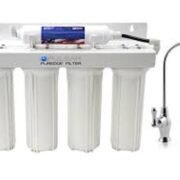Suggestions as to the developments that might take place in the dynamic environment of the coatings business a function primarily of technical advances and market requirements within a competitive framework shaped by increasing constraints on environmental sustainability. Coatings Trends and Technologies 2024 will showcase the latest advancements. In 2024, coatings will coordinate a facemask for their own innovation journey tackling functionality, sustainability and performance.
For 2021, the coatings trends are transitioning in industries like automotive, construction, aerospace and consumer goods by what they apply and how. In the following article, we identify some of the major trends in coatings technology for 2024.
1. Sustainability and Green Coatings
This invention involves removing VOC from our coatings, investing. Greater regulation and enforcement have driven the move from solvent-based coatings to more sustainable alternatives and spurred a global trend in lowering carbon emissions.
There are also emerging bio-based coatings that are produced from renewable sources like plant oils and resins. They provide the same performance as an existing products with a much smaller environmental impact. Similarly, producers are working on developing recyclable and less toxic coatings.
2. Smart and Functional Coatings
2018 saw the rise of smart Coatings Trends trends in 2024 one of the most exciting , with technologies advancing at a fast rate to address custom requirements across industries. Self-healing coatings can serve to repair tiny scratches or damage and prolong the lifetime of a surface, reducing maintenance prices. There are smart coatings that offer additional functionalities to improve healthiness and cleanliness, such as anti-corrosion and anti-microbial properties that make it especially suitable for use in places like hospitals or food processing industry.
3. Nanotechnology in Coatings
Nanotechnological applications change the coatings industry further in course of 2024 Nano coatings use nanoparticles to provide excellent strength, high wear resistance and reliable protection. In harsh environments such as the aerospace or marine industries where corrosion, UV light and extreme weather conditions are huge issues, these coatings provide great value.
4. Digitalization and Industry 4.0
By 2024, advanced analytics and artificial intelligence (and machine learning) are expected to be present in lines of production to make them smarter increasing the level of energy efficiency, lessening wastes from processing activities and balancing formulations. These technologies enable manufacturers to model and predict coating performance before they are made, shortening development times and increasing product options.
Digital tools are also providing a more robust customer experience through consistent color matching, specialized finishes and even predictive maintenance. Coatings Trends and Technologies 2024: Exploring the Latest Innovations and Future Directions in the Coatings Industry.”
5. High-Performance and Durable Coatings
Industries continue to demand that today and in 2024, coatings are developed to have a superior focus on durability which enhance their performance, protection and life expectancy. Newer resin technologies, cross-linking mechanisms and curing processes are delivering high performance coatings that can withstand severe conditions and provide excellent hard or tough contact resistant coatings with resistance to wear, corrosion, chemicals etc.
In this arena, one of the most important properties is durability in protective coatings for infrastructure and the construction industry. As extreme weather events become more common in the face of climate change, coatings that can provide protection to buildings, bridges and other structures are in increasing demand. The rising acceptance of advanced coatings, possessing fire resistance capability, thermal isolation as well as hydrophobic nature is also supplementing the thick film coatings market growth.
6. Low-VOC and VOC-Free Coatings
Even though the restriction cap for the volatile organic compounds set by the world’s regulatory bodies are escalating. There are still considerable controls which will be need in place for them as they can deteriorate the health. Zero-VOC and Low-VOC Coatings which are the most innovative products launched recently by the coatings industry. Demand will grow even more quickly in 2024, especially in markets with stricter environmental regulations such as Europe and North America. Unlike high VOC solvent-borne coatings water-based coatings are an environmentally friendly, sustainable alternative for many applications without compromising on compliance.
7. Hybrid Coating Systems
In 2024, hybrid coatings offer a best-of-both-worlds scenario: the different strengths of one or more technologies together. Of particular worth are hybrid coatings in industries that need multifunctional solutions. Organic components can impart good mechanical properties while inorganic components enhance aesthetics; combining both allows manufacturers to get the best of both worlds. In general, these coatings are easier to apply and cure, making them an economical choice for many uses.
Conclusion
The global coatings industry in 2024 has evolved significantly due to a combination of environmental pressures, technological advances and market drivers for improved performance and functionality. Sustainability is increasingly about green coatings and low-VOC solutions. Simultaneously, with developments in smart coatings and hybrids, advancements in innovative tensile fabrics are allowing for protection and customization. As the demonstration of the digitalization and Industry 4.0 in transforming manufacturing processes to meet the varied requirements across a broad range of sectors, has resulted in individuals from coatings industry emerging as key players in shaping up future materials for surface protection.








